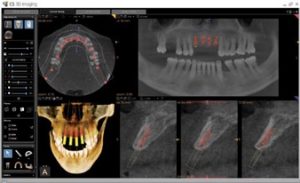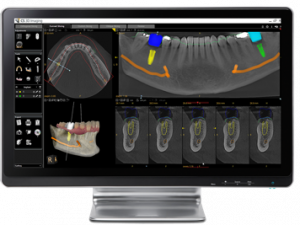If your dentist or physician has taken x-rays, you may request that they forward them to our office. If there is not enough time, please pick them up and bring them to our office. If additional films are necessary, they can be taken at our facility.
The dosage of X-ray radiation received by a dental patient is typically small (around 0.150 mSv for a full mouth series, according to the American Dental Association . equivalent to a few days’ worth of background environmental radiation exposure, or similar to the dose received during a cross-country airplane flight (concentrated into one short burst aimed at a small area). Incidental exposure is further reduced by the use of a lead shield, lead apron, sometimes with a lead thyroid collar. Technician exposure is reduced by stepping out of the room, or behind adequate shielding material, when the X-ray source is activated.


There is increasing use of CT (computed tomography) scans in dentistry, particularly to plan dental implants; there may be significant levels of radiation and potential risk. Specially designed CBCT (cone beam CT) scanners can be used instead, which produce adequate imaging with a stated tenfold reduction in radiation.




* On studies conducted by John B. Ludlow, University of North Carolina, School of Dentistry: Dosimetry of CS 8100 CBCT Unit and CS 9300 Low-Dose Protocol, August 2014; Dosimetry of the Carestream CS 9300 CBCT unit, June 2011. 73% to 95% dose reduction when compared to the standard acquisition program for the CS 9300/CS 9300 Select and varies based on field of view selected. 85% reduction (3µSv) found in 5×5 cm adult exams; exact dose reduction varies based on field of view and ranges from 0% to 85%.
